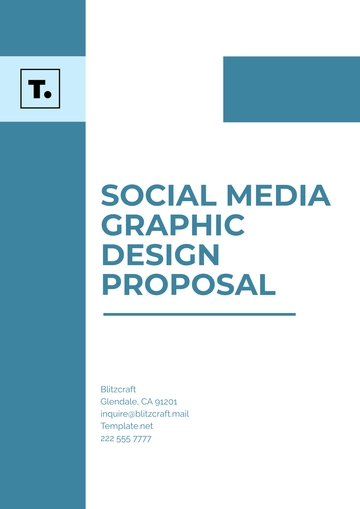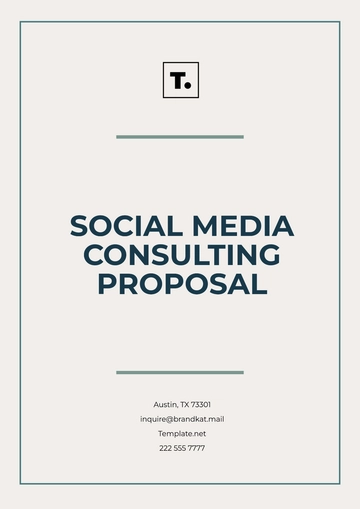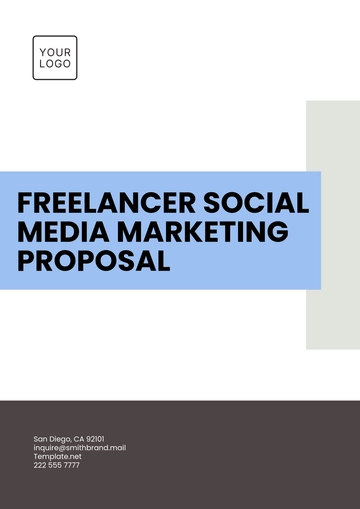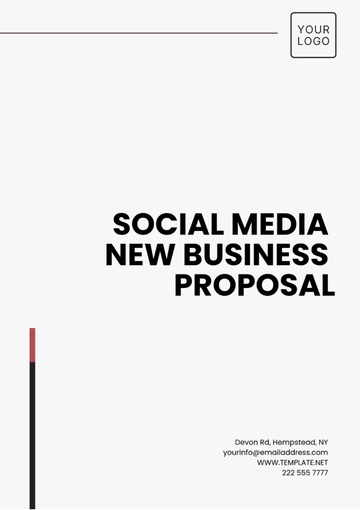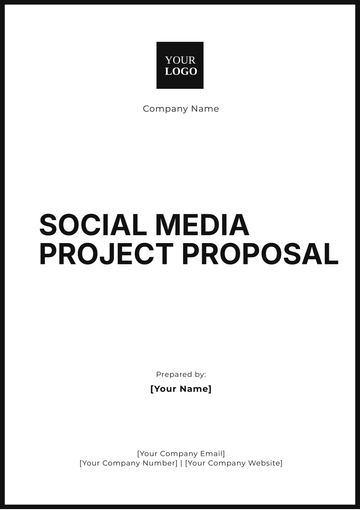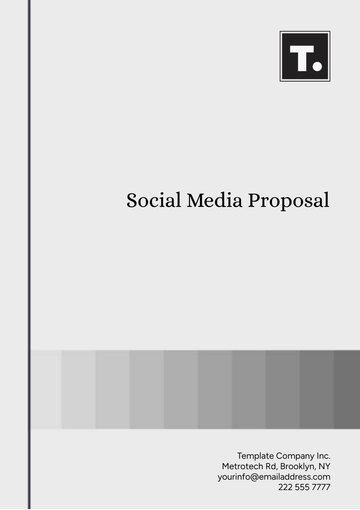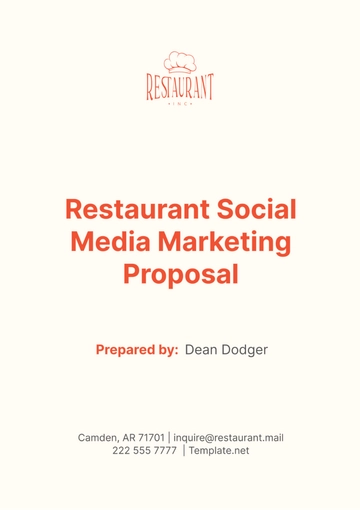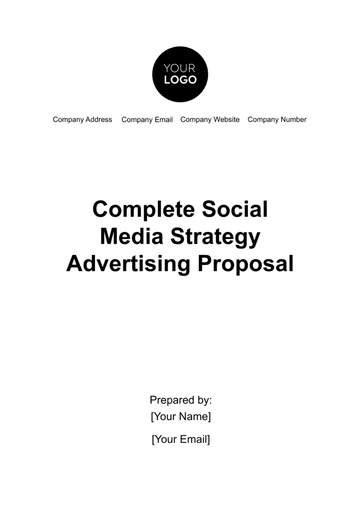Free Complete Social Media Strategy Advertising Proposal
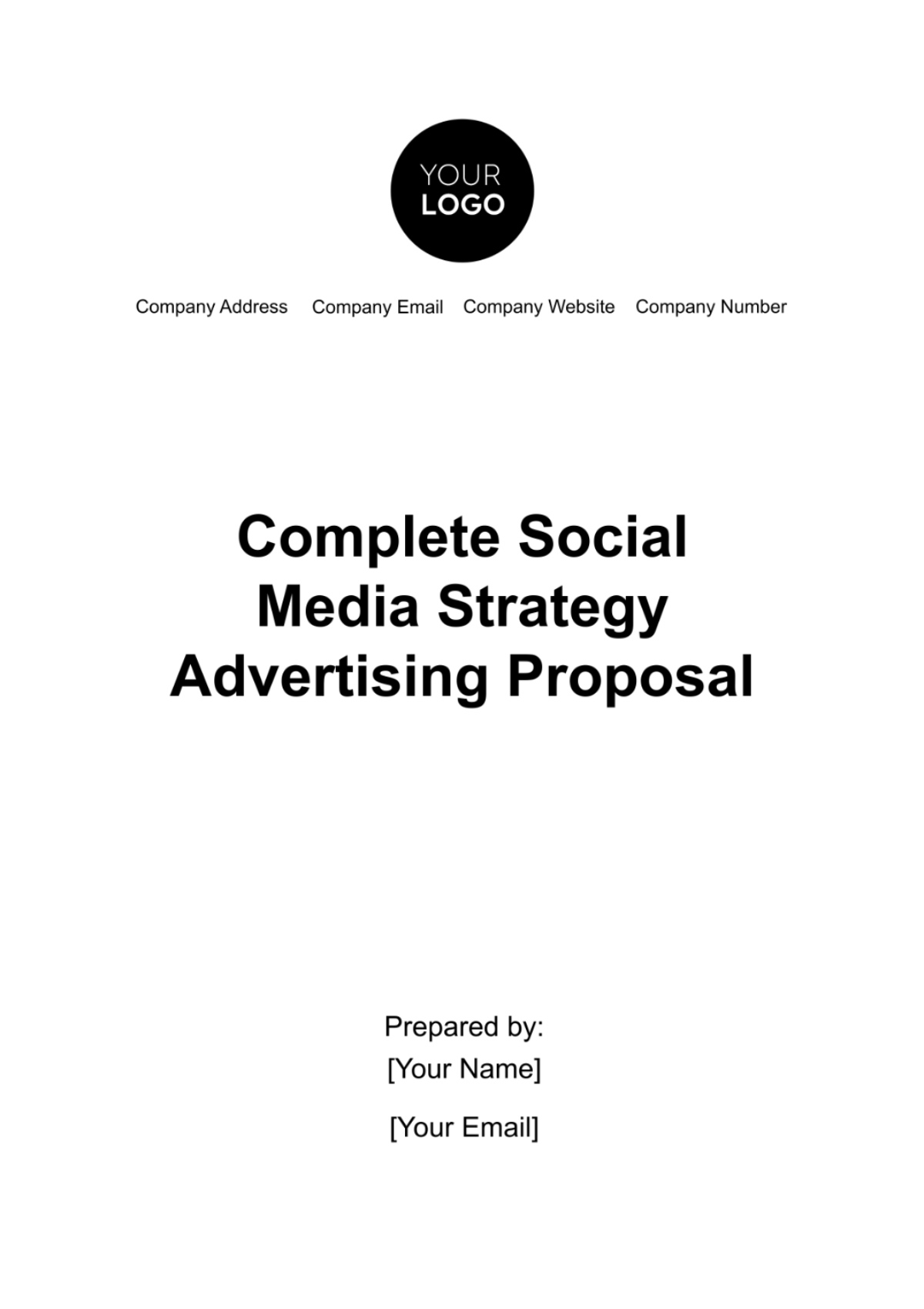
I. Executive Summary
Our comprehensive social media strategy aims to elevate [Client's Company Name]'s online presence, engage the target audience, and drive meaningful results. By leveraging a mix of organic and paid strategies across key platforms, we intend to achieve specific, measurable goals aligned with [Client's Company Name]'s business objectives.
II. Client Background
A. Industry Overview:
[Client's Company Name] operates in the [Client's Industry] industry, providing [Brief Description of Client's Products/Services]. The target audience includes [Demographics] with a strong interest in [Client's Niche].
B. Current Social Media Presence:
A review of [Client's Company Name]'s current social media accounts on platforms like Facebook, Instagram, and Twitter reveals [Current Follower Count, Engagement Rates, etc.].
C. Competitor Analysis:
[Client's Company Name] faces competition from [Competitor 1], [Competitor 2], and [Competitor 3]. Through a detailed analysis, we've identified key strengths and weaknesses to inform our strategy.
III. Objectives and Goals
Our social media strategy for [Client's Company Name] is designed to achieve the following objectives, ensuring a comprehensive approach to meet both short-term and long-term goals:
A. Elevate Brand Awareness:
Goal: Increase brand visibility by [0]% within the next quarter.
Strategy: Implement a targeted content calendar, highlighting [Unique Selling Propositions] and leveraging eye-catching visuals to create a memorable brand presence.
B. Drive Targeted Website Traffic:
Goal: Increase website visits by [0]% through social media referrals.
Strategy: Deploy strategic link-building campaigns, leveraging compelling calls-to-action in our content, and utilizing swipe-up features on platforms like Instagram.
C. Generate Quality Leads:
Goal: Achieve a [0]% increase in lead generation via social media campaigns.
Strategy: Implement lead generation ads, compelling landing pages, and interactive content to capture and nurture leads effectively.
D. Boost Sales Conversion:
Goal: Increase online sales by [0]% through targeted advertising.
Strategy: Utilize data-driven insights to optimize paid advertising, implement retargeting campaigns, and leverage social commerce features on platforms such as Facebook and Instagram.
IV. Target Audience
Our target audience comprises [Demographics] who are [Characteristics, Interests]. Understanding their preferences will guide content creation and engagement strategies.
V. Competitor Analysis
In understanding the competitive landscape, we've conducted a comprehensive analysis of key players in the [Client's Industry]. This analysis serves as a foundation for shaping our social media strategy:
A. Competitor 1: [Competitor Name]
Strengths:
Robust engagement on Instagram with visually appealing content.
Active community participation through contests and user-generated content.
Weaknesses:
Limited presence on professional networks like LinkedIn.
Untapped potential in utilizing video content for a wider audience reach.
VI. Social Media Platforms Selection
Based on our analysis, we recommend focusing on the following platforms:
Platform | Justification |
Wide audience reach and effective ad targeting. | |
Visual content appeal and engagement. | |
B2B engagement and professional networking. | |
Real-time updates and engagement with trends. |
VII. Content Strategy
A. Content Types:
Engaging visuals (images, infographics, videos).
Educational blog posts and industry insights.
Interactive polls and quizzes.
B. Posting Schedule:
[Specific Posting Times and Frequency].
C. Tone and Voice:
[Adopt a Friendly/Professional Tone].
VIII. Paid Advertising Strategy
A. Budget Allocation:
Total Budget: $[0].
Allocation:
Facebook Ads: $[0].
Instagram Ads: $[0].
LinkedIn Ads: $[0].
Twitter Ads: $[0].
B. Ad Formats:
Engaging carousel ads, sponsored posts, and targeted video ads.
C. Expected Results:
Anticipate a [Expected ROI]% return on advertising investment.
IX. Budget and Resource Allocation
Category | Allocation |
Content Creation | $[0] |
Advertising Spend | $[0] |
Tools and Analytics | $[0] |
Contingency | $[0] |
X. Key Performance Indicators (KPIs)
To measure the success and effectiveness of our social media strategy, we will track key performance indicators that align with [Client's Company Name]'s objectives. These KPIs will provide tangible insights into the campaign's impact:
A. Engagement Rates:
Monitor likes, comments, and shares across all platforms.
Aim for a [0]% increase in overall engagement.
B. Click-Through Rates (CTR):
Track the number of clicks on links within posts and advertisements.
Strive for a [0]% improvement in CTR, indicating increased interest and interaction.
C. Conversion Rates:
Measure the percentage of social media leads converted into actual sales.
Set a goal for a [0]% increase in conversion rates.
D. Follower Growth:
Monitor the growth in the number of followers across all platforms.
Aim for a [0]% increase in followers during the campaign period.
E. ROI from Paid Advertising:
Calculate the return on investment from paid advertising efforts.
Strive for a positive ROI and aim for a [0]% improvement.
F. Influencer Collaboration Impact:
Evaluate the effectiveness of influencer collaborations through engagement, reach, and follower growth.
Set benchmarks for [Target Metrics] to measure the success of each collaboration.
XI. Timeline
Our proposed timeline for the implementation of the social media strategy is designed to ensure a seamless and phased approach to maximize effectiveness:
A. Week 1-2: Strategy Development and Client Approval
Conduct a thorough review of the finalized strategy with key stakeholders.
Refine and finalize content themes, messaging, and visual elements.
Seek client approval on the overall strategy and proposed budget.
B. Week 3-4: Content Creation and Platform Setup
Initiate the creation of engaging and visually appealing content aligned with the approved strategy.
Develop a content calendar detailing specific posts, themes, and publishing schedules.
Set up and optimize social media profiles on selected platforms, ensuring consistent branding.
C. Week 5-6: Launch of Organic Campaigns
Commence the organic social media campaign, initiating content publication and community engagement.
Monitor and respond to audience interactions, fostering a sense of community.
Begin influencer outreach and collaboration discussions if applicable.
D. Week 7-8: Launch of Paid Advertising Campaigns
Initiate paid advertising campaigns on selected platforms as outlined in the strategy.
Monitor ad performance and make real-time adjustments based on initial data.
Continue influencer collaborations and amplify their impact.
E. Week 9-12: Ongoing Monitoring, Analysis, and Optimization
Regularly review analytics and key performance indicators (KPIs).
Conduct A/B testing on ad creatives and adjust targeting for optimal results.
Optimize content based on audience engagement and feedback.
Fine-tune influencer collaborations for maximum impact.
Prepare and deliver weekly and monthly performance reports to the client.
F. Ongoing: Community Management and Engagement
Continuously engage with the audience through comments, messages, and social media mentions.
Implement community management strategies to address any concerns or inquiries promptly.
Foster a positive online community around [Client's Company Name].
XII. Monitoring and Analytics
Utilizing advanced analytics tools such as [Analytics Tool Name], we will conduct regular monitoring and analysis. Weekly and monthly reports will be generated to assess the performance of our social media strategy against the defined KPIs. These insights will inform real-time optimizations and strategic adjustments to maximize campaign effectiveness.
XIII. Risk Analysis
As we embark on this social media advertising journey, it's important to acknowledge potential risks and challenges. Our risk analysis includes:
Algorithm Changes: Stay informed about changes in social media algorithms and adapt strategies accordingly.
Negative Feedback: Proactively address negative comments or feedback through a robust community management plan.
Ad Budget Fluctuations: Regularly review and adjust ad budgets based on performance to ensure optimal resource allocation.
XIV. Conclusion and Call to Action
In conclusion, our tailored social media strategy is poised to drive [Client's Company Name] towards its overarching goals. By consistently monitoring KPIs, analyzing performance, and adapting to the dynamic social media landscape, we aim to deliver measurable and impactful results.
XV. Next Steps
As we progress through the outlined timeline, the following key steps will be taken to ensure the successful execution and ongoing optimization of the social media strategy:
A. Regular Stakeholder Meetings:
Schedule weekly check-ins to provide progress updates, address any queries, and gather feedback.
Conduct bi-weekly strategy review sessions to ensure alignment with evolving business goals
B. Content Calendar Approval:
Submit the detailed content calendar for your approval before each month's campaign launch.
Collaborate on content ideas, themes, and any additional announcements or promotions.
C. Ad Performance Review:
Bi-weekly reviews of paid advertising performance, analyzing key metrics and adjusting strategies accordingly.
Collaborate on creative elements, messaging, and targeting to continuously enhance ad effectiveness.
D. Influencer Collaboration Optimization:
Regularly assess the impact of influencer collaborations through ongoing monitoring and analysis.
Adjust collaboration strategies based on performance metrics and audience feedback.
- 100% Customizable, free editor
- Access 1 Million+ Templates, photo’s & graphics
- Download or share as a template
- Click and replace photos, graphics, text, backgrounds
- Resize, crop, AI write & more
- Access advanced editor
Introducing Template.net's Complete Social Media Strategy Advertising Proposal Template, a comprehensive solution for crafting winning ad campaigns. Fully customizable and editable in our Ai Editor Tool, this template empowers businesses to develop tailored strategies for maximum impact. Streamline the proposal process, outline objectives, target audiences, and budget allocation with ease. Elevate your advertising efforts and achieve exceptional results with our user-friendly platform.
You may also like
- Business Proposal
- Research Proposal
- Proposal Request
- Project Proposal
- Grant Proposal
- Photography Proposal
- Job Proposal
- Budget Proposal
- Marketing Proposal
- Branding Proposal
- Advertising Proposal
- Sales Proposal
- Startup Proposal
- Event Proposal
- Creative Proposal
- Restaurant Proposal
- Blank Proposal
- One Page Proposal
- Proposal Report
- IT Proposal
- Non Profit Proposal
- Training Proposal
- Construction Proposal
- School Proposal
- Cleaning Proposal
- Contract Proposal
- HR Proposal
- Travel Agency Proposal
- Small Business Proposal
- Investment Proposal
- Bid Proposal
- Retail Business Proposal
- Sponsorship Proposal
- Academic Proposal
- Partnership Proposal
- Work Proposal
- Agency Proposal
- University Proposal
- Accounting Proposal
- Real Estate Proposal
- Hotel Proposal
- Product Proposal
- Advertising Agency Proposal
- Development Proposal
- Loan Proposal
- Website Proposal
- Nursing Home Proposal
- Financial Proposal
- Salon Proposal
- Freelancer Proposal
- Funding Proposal
- Work from Home Proposal
- Company Proposal
- Consulting Proposal
- Educational Proposal
- Construction Bid Proposal
- Interior Design Proposal
- New Product Proposal
- Sports Proposal
- Corporate Proposal
- Food Proposal
- Property Proposal
- Maintenance Proposal
- Purchase Proposal
- Rental Proposal
- Recruitment Proposal
- Social Media Proposal
- Travel Proposal
- Trip Proposal
- Software Proposal
- Conference Proposal
- Graphic Design Proposal
- Law Firm Proposal
- Medical Proposal
- Music Proposal
- Pricing Proposal
- SEO Proposal
- Strategy Proposal
- Technical Proposal
- Coaching Proposal
- Ecommerce Proposal
- Fundraising Proposal
- Landscaping Proposal
- Charity Proposal
- Contractor Proposal
- Exhibition Proposal
- Art Proposal
- Mobile Proposal
- Equipment Proposal
- Student Proposal
- Engineering Proposal
- Business Proposal
